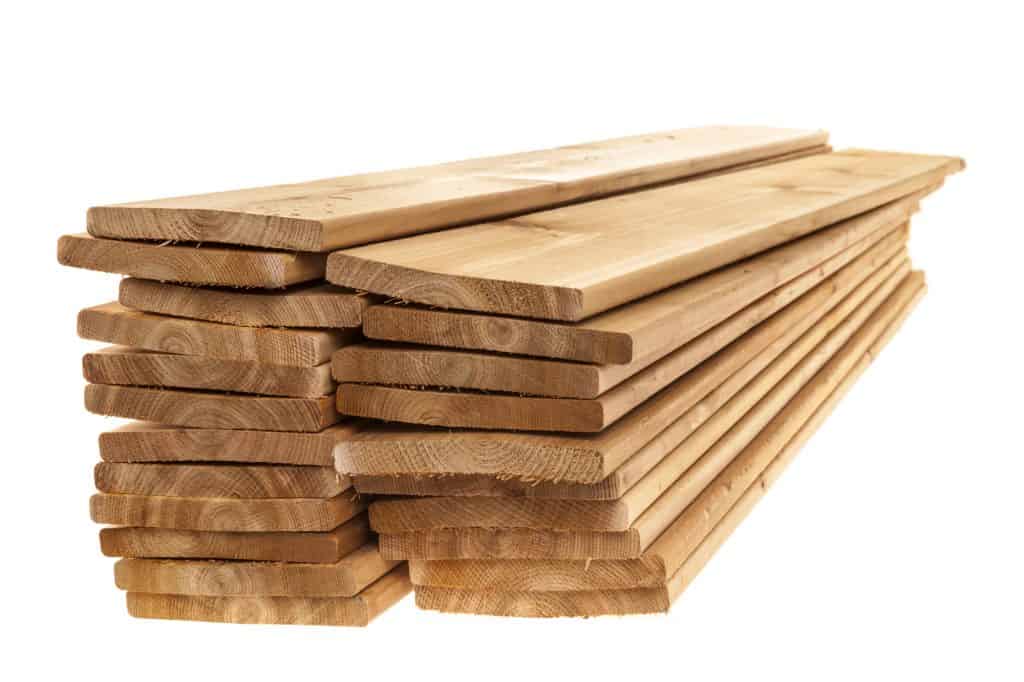Pressure treated wood often has active chemical ingredients inside of it that make people question whether or not they are safe to use in their gardens. You are not alone in wondering this.
Chemicals will leak out of the wood into the soil, which is then absorbed into your plants. Although, it is important to note that the number of chemicals is not high enough to cause damage to a person.
In this guide, we will explain whether or not you should use pressure treated wood in your garden and what the alternatives are.
Be sure to read the rest of the guide if you are considering using pressure treated wood anytime soon.
Using Pressure Treated Wood
Pressure treated wood is designed for constructing fences or decks, which means that it was not made with gardens in mind. The chemicals from a plank of treated wood can leak out into your garden’s soil, where some of it will be absorbed by your plants.
If you are growing food, then you might be eating some of those chemicals.
However, the amounts are not high enough to be harmful to a person, but we are exposed to chemicals constantly in the modern world. You probably do not want to be exposed to even more.
In short, you can use pressure treated wood in your garden. It will not hurt you, although there are better, greener, and healthier alternatives that you might want to consider when growing food in a bed built with this material.
Can Pressure Treated Wood Make You Sick?
The chemicals leaked into your garden are in trace amounts and the plants absorb even less than that, so pressure treated wood probably can’t make you sick.
However, this is as long as you follow all safety precautions when using treated woods. You will want to use gloves when handling it.
Pressure treated wood is more likely to make you sick if you burn it. This is because it releases some arsenic into the air through smoke- something that you should not ever be breathing in.
That same arsenic can leak into your growing veggies- although it is not enough to cause you harm. Still, arsenic may stunt the growth of certain plants when they are exposed to it.
Add a Liner
However, if you still want to use pressure treated wood, be sure that you add a liner between the soil and the wood. That way, even if the wood does leak some chemicals, they will not go into the soil where your vegetables can absorb them.
Pressure treated garden beds do look quite nice, so I understand why people might prefer them over other materials. If you are going to use this kind of wood, please be sure that you are taking the extra step to get a liner in there.
A raised bed liner is meant to help keep soil contained, making it possible to install the bed on any kind of surface. They prevent water from running through the soil and causing it to spill everywhere.
The final benefit of a liner is that they also are amazing at stopping weeds from getting into your garden bed. They add an extra barrier that they would need to work their way through, so you might want to consider adding one just for that feature.
Alternatives to Pressure Treated Wood
Cedar

Cedar is an amazing wood to use in any garden. It is pretty resistant to rotting and can last as long as 15 years before it needs to be replaced. This material also looks nice as a raised bed and can repel insects.
This can be more expensive than other types of wood, but is more worth it. Your vegetables will be chemical free and you have the bonus of the oils in the wood keeping away insects. Not to mention that cedar smells great.
Cedar does not need to be maintained as much as pressure treated wood and lasts longer. However, it is slightly more expensive.
Bricks
Another alternative, would be bricks. They look stunning and can be used to create a variety of designs. Brick is also much safer than treated woods- there are chemicals for it to leak into your soil.
It can take a lot longer to build your raised bed with this material. The bricks need a layer of concrete for support, then they need to be arranged with mortar between them. Many people shy away from longer projects like this, but trust me- you will love the result.
Concrete
Concrete does not have the ability to leak chemicals into your garden’s soil. This makes it much safer for you to grow food in than any type of pressure treated wood. Concrete has the potential to be colored or stamped with different designs.
Concrete blocks can be heavier and take more time to transport. Be sure that you are careful when handling heavy materials like this.
Conclusion
In short, pressure treated wood is not safe for you to use in your garden bed. This is because treated wood leaks harmful chemicals into soil, where it is often absorbed by your plants.
If you still want to use pressure treated wood, you can prevent leaking by adding a liner between the wood and the soil. This can also give you some more benefits.
Finally, there are many alternatives to pressure treated wood that you might want to consider. They look just as nice and can be used in a variety of ways. Cedar is the best option as far as wood goes since it can repel insects naturally.
Brick and cement are other amazing choices for a nice looking material that does not leak chemicals. Overall, there are so many better alternatives to pressure treated wood.
If you have any questions, please reach out to me. I enjoy working in the garden and have a lot of experience when it comes down to it.

